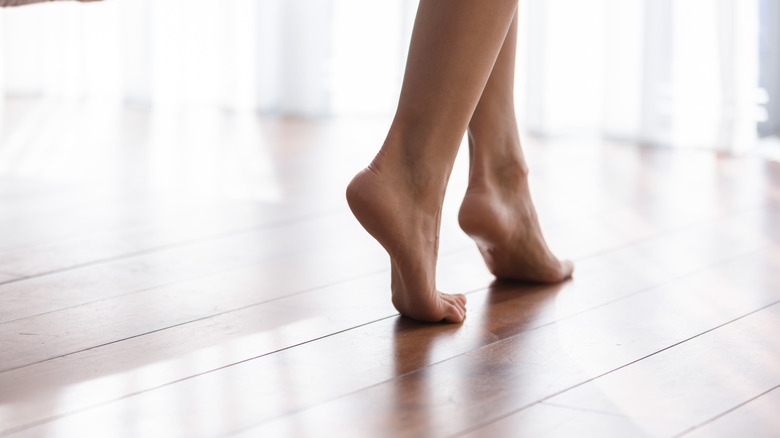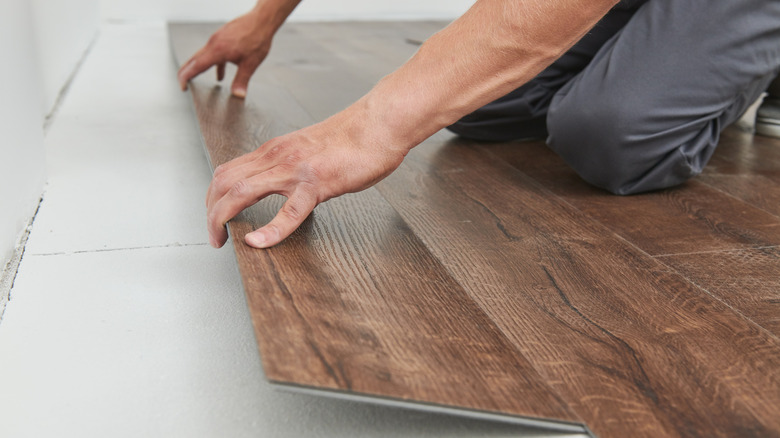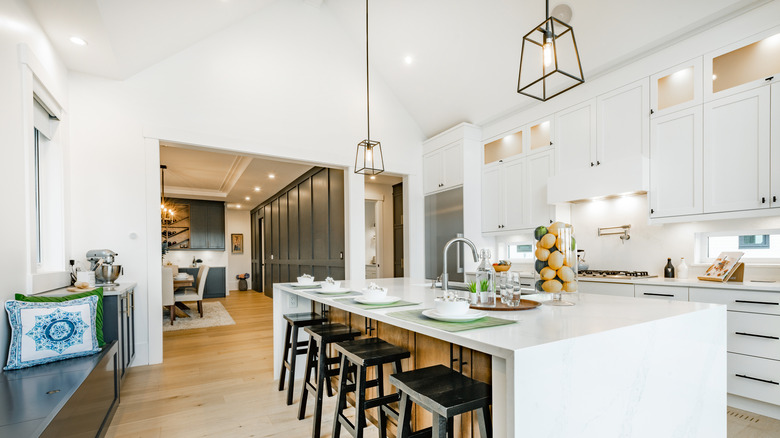Mistakes Everyone Makes When Installing Laminate Flooring
Installing laminate floors is a great option for many homeowners. With a price point that places the luxuriousness of wood flooring into contention in any home, averaging $1 to $3 per square foot, according to The Spruce, laminate flooring has become increasingly popular over the years, via The North American Laminate Flooring Association.
As well, laminate flooring is easy to install on your own, further reducing the cost of installation by removing the need for professional help. Whether you install the new flooring on your own or choose to bring in a professional, there are some common mistakes that can creep into the project. Laminate flooring isn't difficult to install, but an improperly laid floor will quickly start to show signs of a problem. Buckling and warping are often indicators that one or more issues have developed in your floorboards, but fortunately, taking steps to ensure a proper fit when approaching the initial installation can help you avoid these troubles.
Laminate flooring is susceptible to moisture penetration, and just like hardwoods, it will morph over time as temperature changes, humidity, and other environmental factors continue to exist within the climate of the home, per Leader Floors.
Ensuring that you've accounted for these common problems will help you get the most out of your new flooring without the pain and inconvenience of needing to repair or replace the boards later down the line.
Forgetting to acclimate the material and leaving out expansion inclusions
Leader Floors report that laminate flooring, like other hardwood floorboards, needs time to acclimate to the environment in which it will be placed. Allowing your flooring to adapt to the humidity, temperature, and other aspects of the room for two to three days is a must when it comes to laminates.
Wood pieces are susceptible to environmental changes and will expand and contract naturally throughout their time in any home. Providing this breathing room to allow your new laminate to become comfortable, so to speak, in the rooms that will be finished with this flooring makes for a better fit. Bestlaminate suggests at least two days of resting time before installation and a second rest period of two days after the floor has been laid before walking through the room or setting furniture on the floorboards.
In addition to acclimating, wood flooring will contract and expand as the temperature changes throughout the year. This means that all wood flooring installations, with laminate included, require clearance for expansion around the edges of the room and across the joints in the boards. According to Bestlaminate, this flooring variety is designed with a floating construction in mind. This means your panels will sit on top of an underlay to provide comfort but not be fastened to the subfloor. Allowing for expansion and subtle movement makes for a longer-lasting laminate floor.
Installing in areas that experience excessive moisture
Laminate flooring will not function well under conditions of extreme moisture. The Spruce reports that laminate flooring cannot withstand pooling water, so using this flooring option in the bathroom, laundry room, or kitchen is often a bad idea. Note that hardwoods are better suited for these parts of the home. While solid hardwood floors can be sanded down and refinished to repair the damage caused by staining and other issues, laminates can't be fixed in this way, and damage to the floor can only be repaired with a replacement board or whole floor.
Leader Floors reports that laminate flooring that has been exposed to moisture regularly will begin to warp, bubble, and experience discoloration. The effects can be dramatic, turning a once-beautiful addition to your home into an eyesore that requires replacement. While laminate is an inexpensive and quality alternative to the purchase of hardwood, it remains a substantial expense if you're forced to replace a newly laid laminate floor with new boards or change to tile after a mishap with moisture, humidity, or other water-based damage.
Keeping laminate flooring at its best requires a careful plan for the layout of your home. Using laminate flooring in areas of the property that aren't likely to experience water damage and high moisture content in the air is the best approach here.


